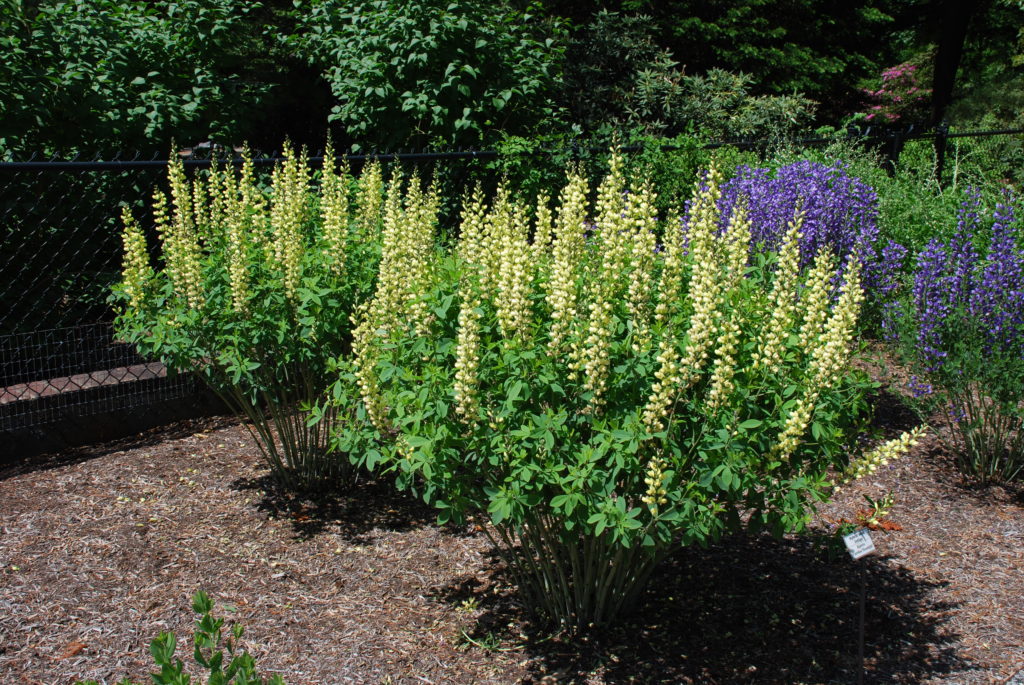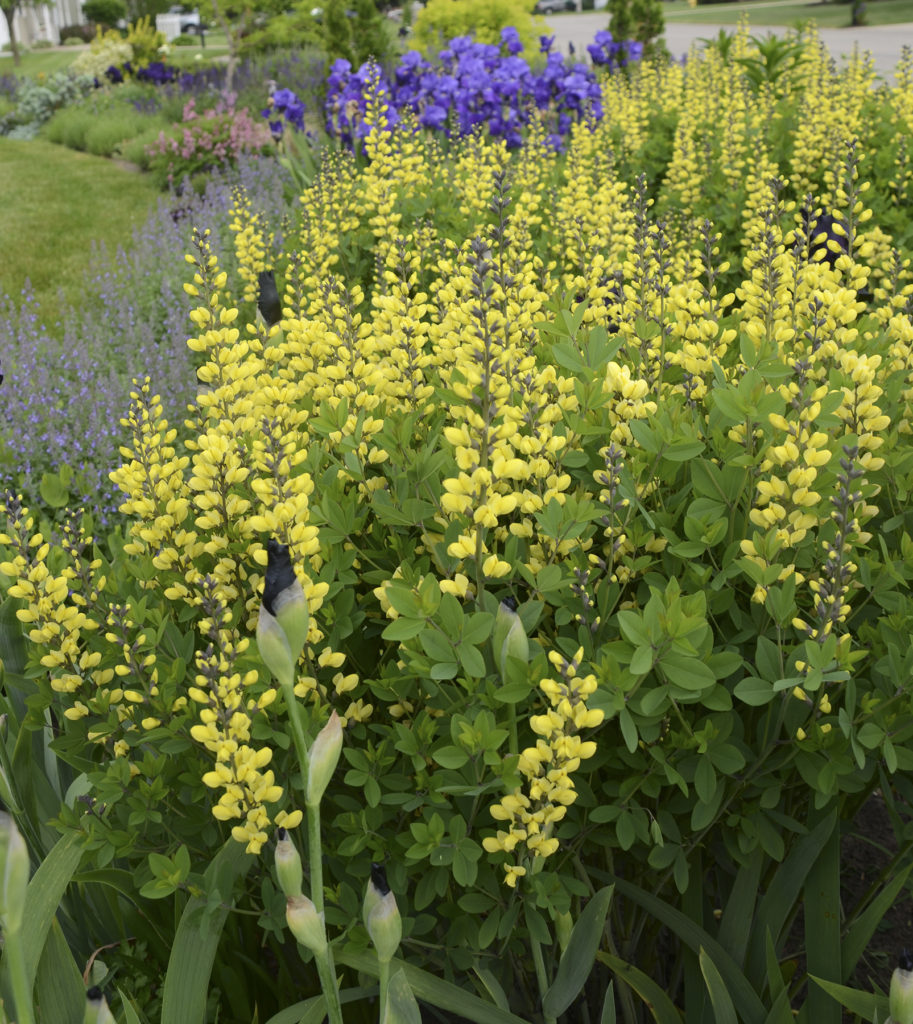
Wild indigo or Baptisia (Baptisia spp.) are a wonderful group of U.S. native perennials (USDA hardiness zones 4-9). A few species have remained outside the gardening scene until recent years. Breeders are creating several hybrids that offer a grand color palette and superior plant form.
Baptisia, belong to the Pea family, new growth emerges in spring, lupine-like flowers that give rise to blue-grey leaves followed by spikes of pea-like flowers. Want to start a collection of baptisias? – Blue false indigo (Baptisia australis) is native to the prairies of North America, is easy to grow and thrives with little maintenance. Top variety is ‘Purple Smoke’ (B. australis x B. alba) with vibrant purple flowers, charcoal stems and gray-green foliage.
Yellow baptisia (Baptisia sphaerocarpa) is native in Texas and Louisiana and north to Oklahoma and Missouri. ‘Carolina Moonlight’ (B. sphaerocarpa x B. alba,) with soft yellow floral spikes; ‘Screaming Yellow’ (zones 5-9) with brilliant yellow-gold flowers, deep green foliage, and compact 2-3 feet high rounded form; ‘Wayne’s World’ grows 4 feet tall with bright white flower spikes.

Newer varieties include the Decadence®series ‘Cherries Jubilee’ (cinnamon colored flowers), ‘Dark Chocolate’ (black, charcoal purple flowers), ‘Lemon Meringue’ (cool lemon yellow flowers), and ‘Chocolate Chip’ (smoky purple flowers).
Plants are very long-lived. Most species have spikes of flowers some blooms appear in May (mid spring) followed by 2-3 in. long, black seed pods which hold on well into winter. Pods and stems can be dried for use in decorative arrangements. Most bloom in spring, but some species bloom in summer. Baptisias are an easy plant to grow, perform best in full sun, grows in poor, adequately drained soils. Varieties range in size from 12 inches tall and wide to 4 feet tall and 6 feet wide. They’re highly deer resistant.
Landscape and other uses: include meadow plantings and as a specimen. Wild indigo plants are used in medicines and dye manufacture.
Outstanding collection: Visit the Paul J. Ciener Botanical Gardens in Kernersville, North Carolina which displays 15 different varieties.

 Posted in
Posted in 
